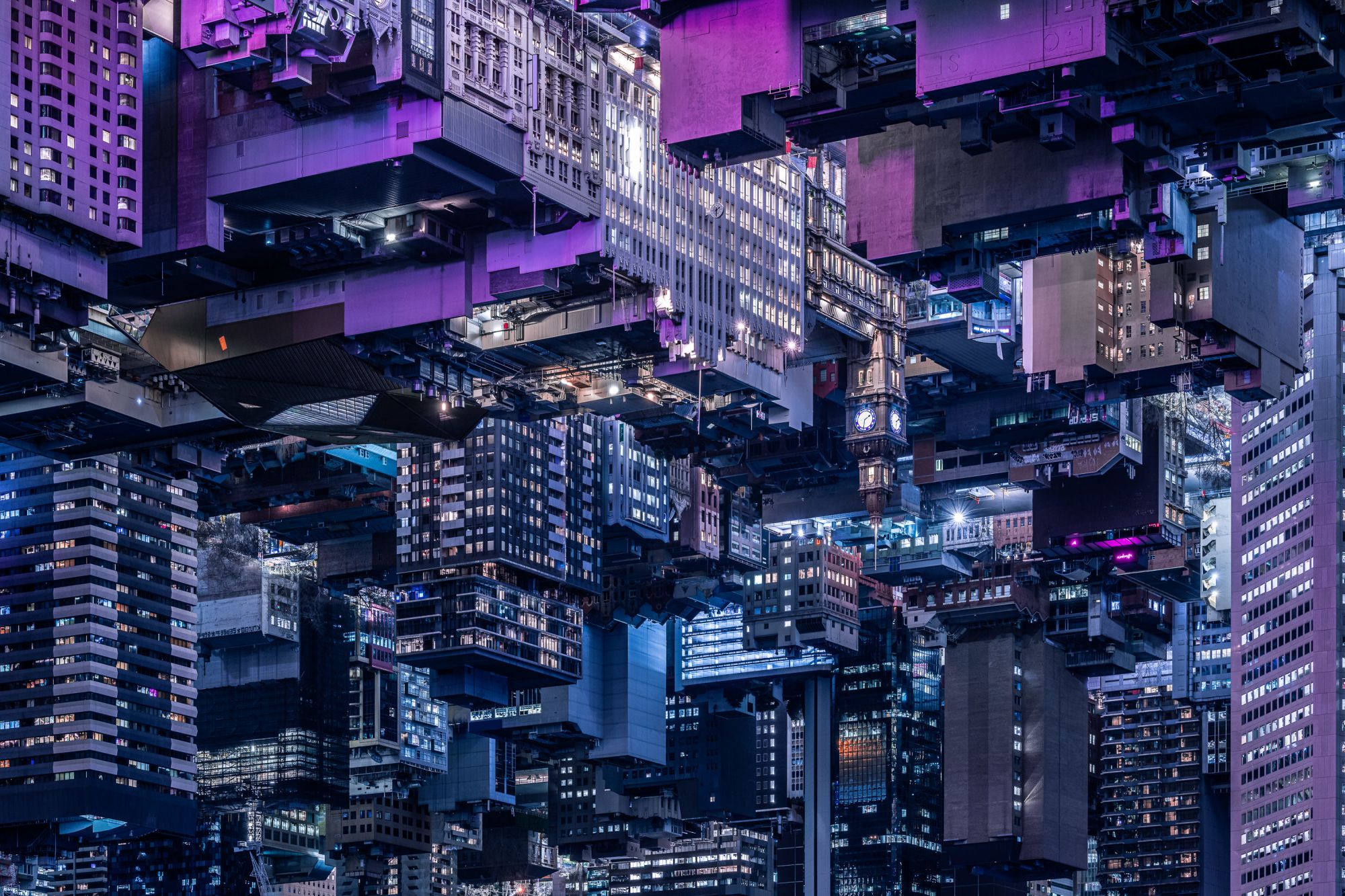These nocturnal urban landscapes, glistening in purple and indigo hues, may well look like a patchwork of different cities, mixed together to create the ultimate sci-fi metropolis.
But they are, in fact, single exposure images taken from a rooftop in the Australian city of Melbourne – then simply flipped upside down.
“They really look like they’re composites of lots of images, but they’re just one single shot and all I’ve done is turn them 180 degrees,” said photographer Tom Blachford in a phone interview.
“I was amazed at the first image I took, I just couldn’t believe how much it looked like this crazy collage of some dystopian future world. And I got really fascinated with how rotating an image could completely change its composition, completely break your brain’s way of looking at it.”
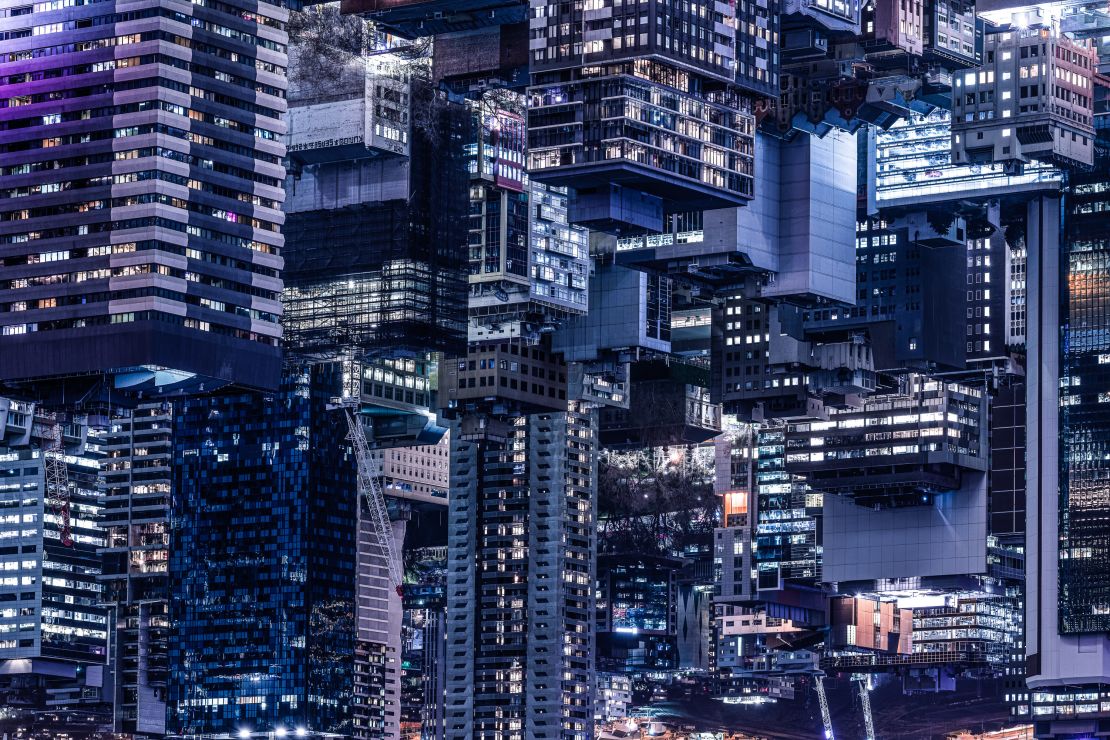
Blachford, who’s from Melbourne, said the images are inspired by the works of Dutch artist M.C. Escher, famous for his mind-bending experiments with perspective and optical illusions, as well dystopian sci-fi films like “Blade Runner” – depicting a futuristic Los Angeles under perennial night-time rain – and “Akira,” a Japanese animated film from 1988 that has become a cult classic.
“There’s quite a few scenes in ‘Akira’ where the city is upside down that they just don’t explain. The city just flips for no reason – I love that it’s sort of in the background and nobody notices,” said Blachford.
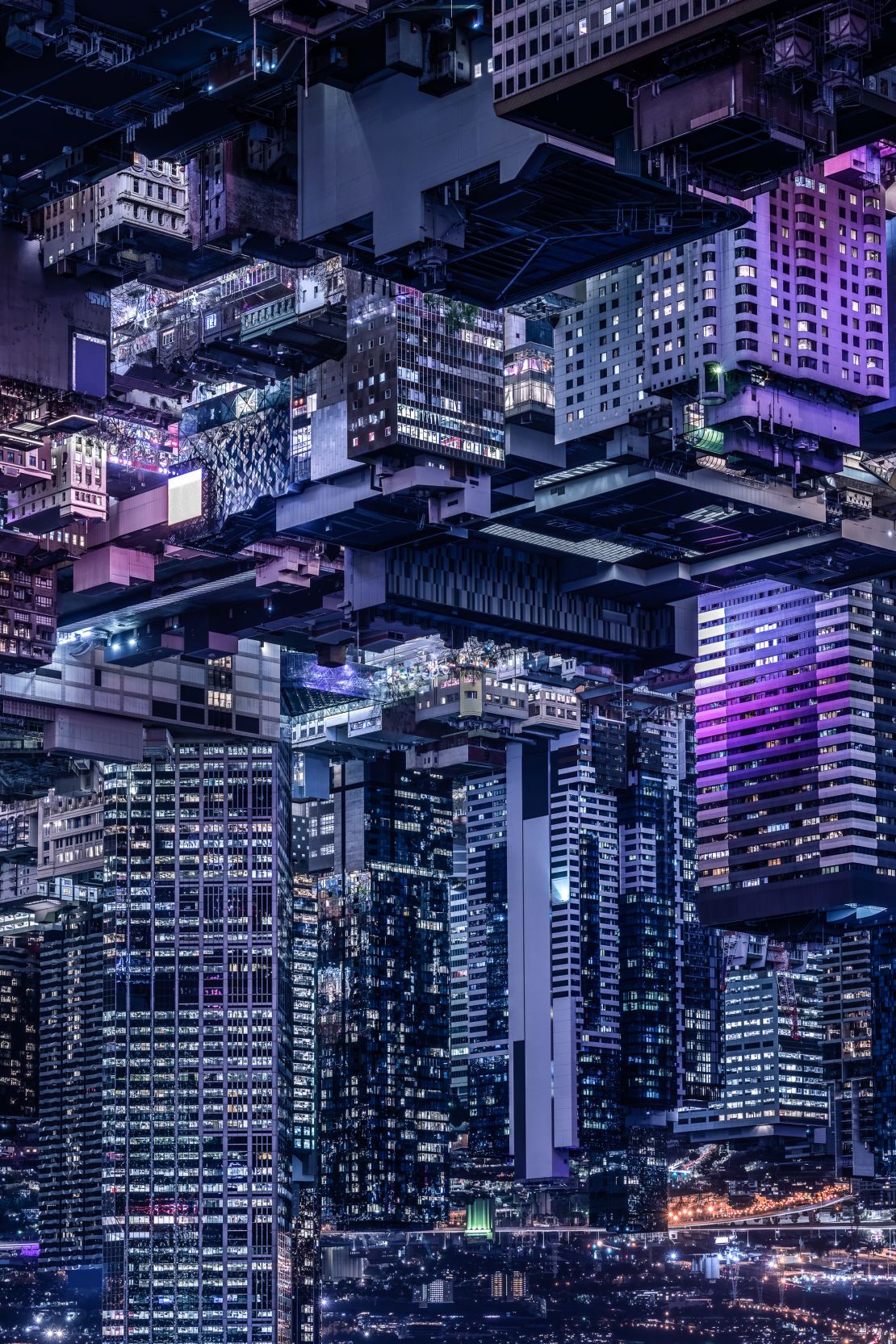
The images were all shot from the top of a building in central Melbourne. A crucial component was the absence of wind. “You need a really still night, because doing long exposures on a tripod, 55 floors up, any wind is going to be massively amplified and it’s going to shake your camera around,” said Blachford.
The colors in each image are then corrected in post-production. “Everything’s very stained with neon, with colors, it was about restricting the color palette and doing a color treatment and grade on it that pushed things towards more of a purple, magenta and blue kind of spectrum.”
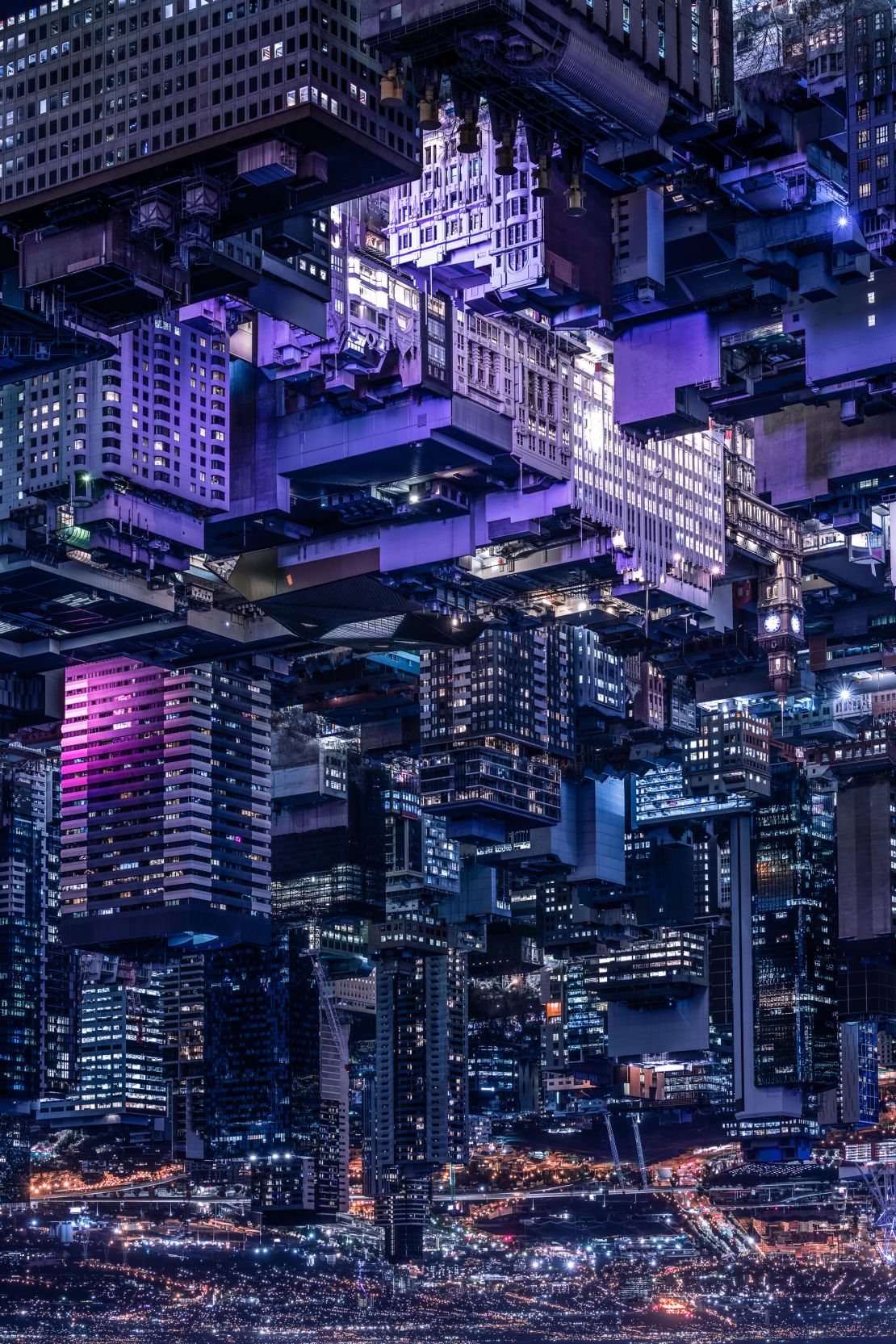
The series includes eight images, which are being exhibited in Melbourne, where some people have struggled to recognize their own city. “Most people think that this is a continuation of my Tokyo series, even people who live here think that these are images from Tokyo,” Blachford said. “It’s been really interesting to show people the city that they know, but literally from a perspective that they never really considered.”
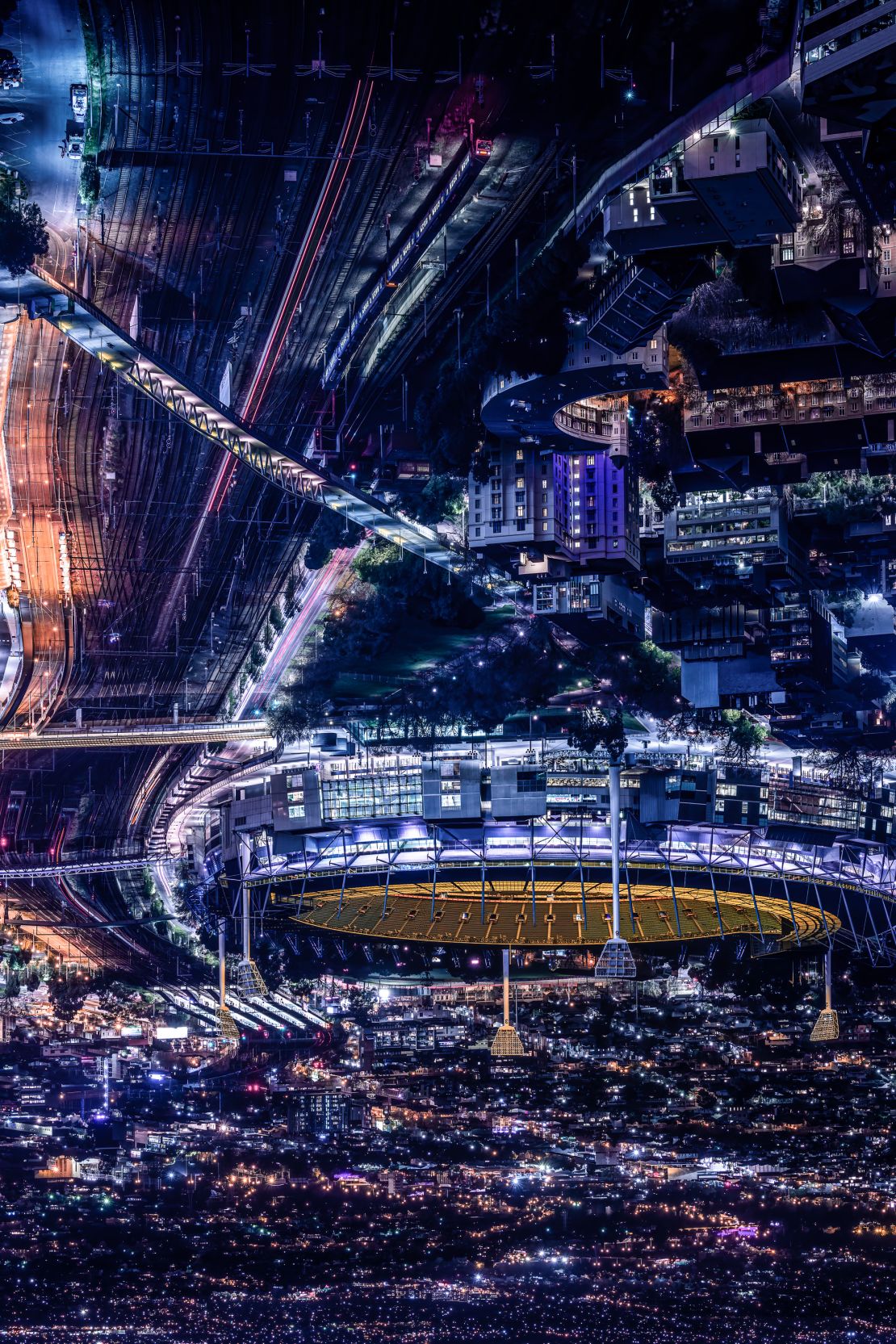
For the exhibition space, Blachford has also created sculptures derived from the photos.
“I taught myself CAD (computer-aided design) and bought a 3D printer. I’ve built what are essentially 3D printed buildings inside an infinity box, which is suspended from the ceiling. When you look up into it, it looks like these tiny buildings go on forever above you,” he explained.
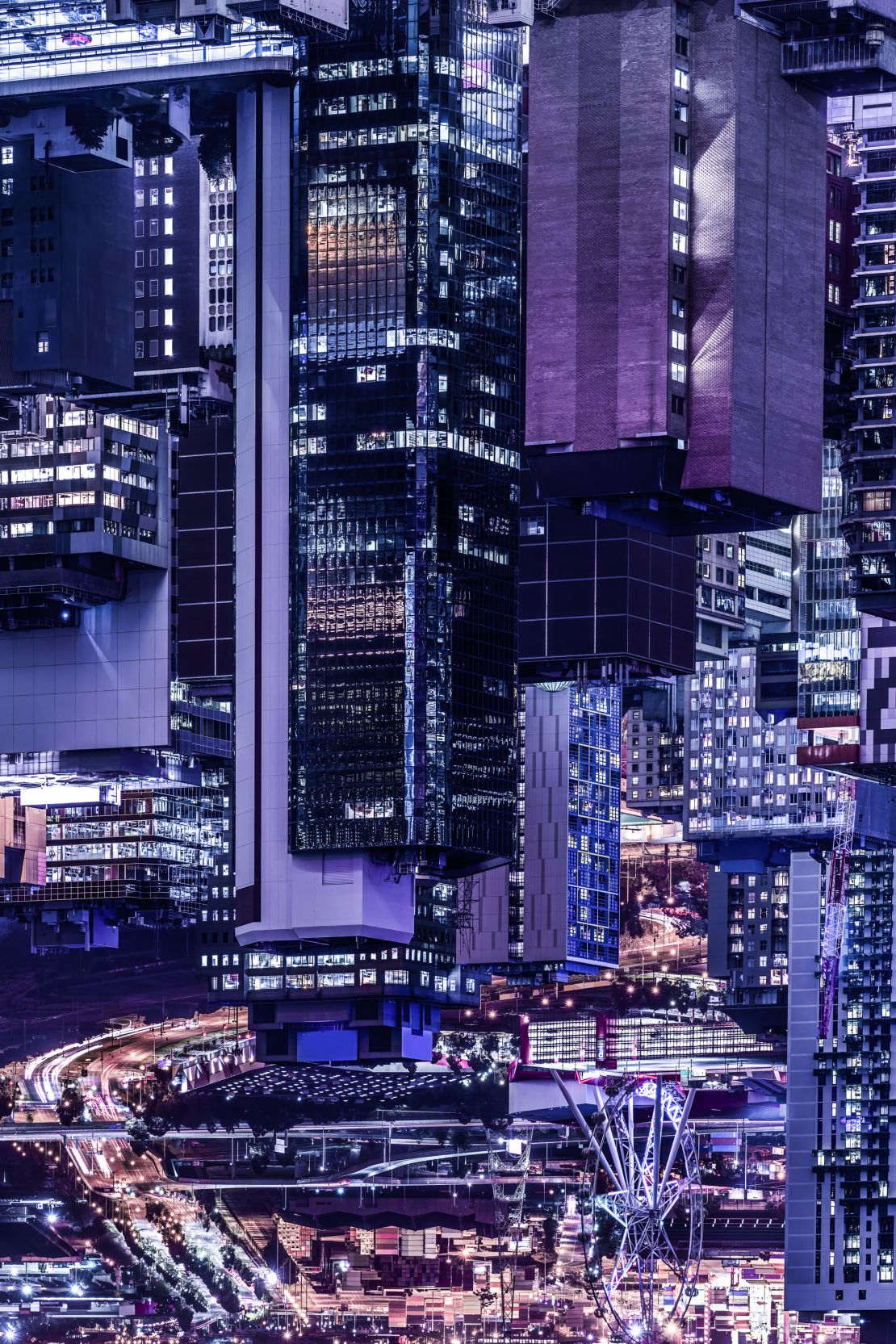
The ultimate goal of these images, Blachford said, is to show the camera’s ability to confuse our senses.
“To me that’s the most interesting thing about photography and shooting at night, that the camera becomes this bridge to another world that’s just out of reach of our senses. It’s too dark, it’s too far away, it’s too bright, and we just can’t process it in that way,” he said.
“But the camera lets me distill that into something that you can see and experience.”
Tom Blachford’s “Centro Verso” is at Melbourne’s Backwoods Gallery until Dec. 8, 2019.

